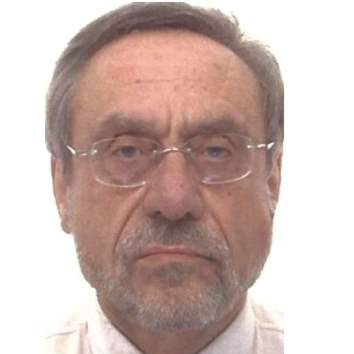State-of-the-Art Sensors Technologies in Italy 2016
A special issue of Sensors (ISSN 1424-8220). This special issue belongs to the section "State-of-the-Art Sensors Technologies".
Deadline for manuscript submissions: closed (28 February 2017) | Viewed by 122568
Special Issue Editors
Interests: chemical sensors; nanomaterials; materials characterizations; nanowire; carbon nanofibers; electrochemical capacitors; screen printing; heterojunctions; RGTO; VLS
Special Issues, Collections and Topics in MDPI journals
Interests: piezoelectric sensors and transducers; resonant and acoustic-wave sensors; energy harvesting for sensors; sensor interface electronics; MEMS and microsensors for physical quantities
Special Issues, Collections and Topics in MDPI journals
Special Issue Information
Dear Colleagues,
This Special Issue is intended to provide an up-to-date and comprehensive view on the state-of-the-art of sensors science and technology in Italy.
The covered topics will span from sensing devices and principles (including chemical, physical, biological, and optical sensors), to sensor technologies (including micro and nano fabrication, film and printed technologies), to sensor systems (including sensor electronics, energy harvesting, sensor networks, and internet of things), to applications in different scenarios (including industrial, automotive, environmental, food and agricolture, biomedical, and other fields).
High-quality research and review articles on any relevant aspect related to sensors in Italy are solicited and will be considered for publication in the Special Issue.
Potential topics include, but are not limited to:
- Chemical Sensors and Microsystems
- Physical Sensors and Microsystems
- Biological Sensors - Biomedical Devices and Systems
- Micro- and Nano-Fabrication for Sensors and Actuators
- MEMS, MOEMS, NEMS
- Materials and Technology
- Theory, modelling, design and simulation
- Micro-Fluidic and Micro Analytical Sensors and Systems
- Sensor Electronics and Signal Processing
- Energy Harvesting and Micro-Power Generation
- Wireless Sensor Networks
- Sensor Systems and Applications
- Electronic Noses
- Actuators and Micromachines
- Packaging and Assembly Technology
Prof. Dr. Giorgio Sberveglieri
Prof. Dr. Vittorio Ferrari
Guest Editors
Manuscript Submission Information
Manuscripts should be submitted online at www.mdpi.com by registering and logging in to this website. Once you are registered, click here to go to the submission form. Manuscripts can be submitted until the deadline. All submissions that pass pre-check are peer-reviewed. Accepted papers will be published continuously in the journal (as soon as accepted) and will be listed together on the special issue website. Research articles, review articles as well as short communications are invited. For planned papers, a title and short abstract (about 100 words) can be sent to the Editorial Office for announcement on this website.
Submitted manuscripts should not have been published previously, nor be under consideration for publication elsewhere (except conference proceedings papers). All manuscripts are thoroughly refereed through a single-blind peer-review process. A guide for authors and other relevant information for submission of manuscripts is available on the Instructions for Authors page. Sensors is an international peer-reviewed open access semimonthly journal published by MDPI.
Please visit the Instructions for Authors page before submitting a manuscript. The Article Processing Charge (APC) for publication in this open access journal is 2600 CHF (Swiss Francs). Submitted papers should be well formatted and use good English. Authors may use MDPI's English editing service prior to publication or during author revisions.







